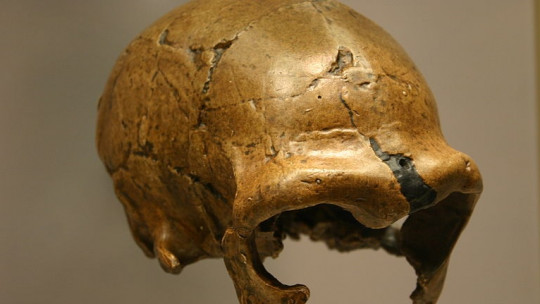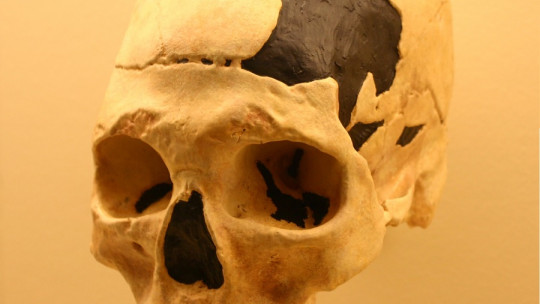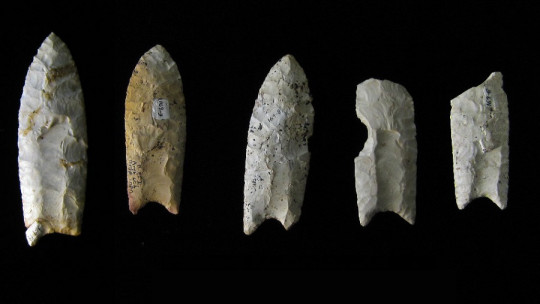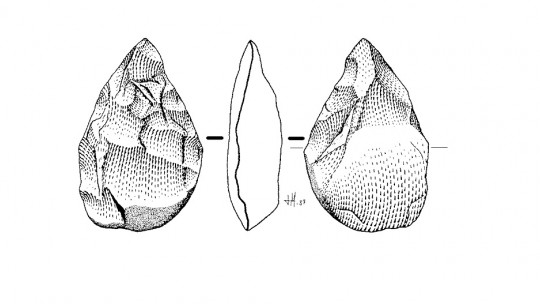
Homo Sapiens, the current human being, emerged in Africa about 300,000 years ago and, around the year 40,000 BC, began to colonize other latitudes where they met, by the way, with the Neanderthals, a species of Homo native to Europe that came from Homo Erectus, which also left Africa about 2 million years ago.
While this has been more or less unanimously accepted for decades, fairly recent findings shed some light on the dates and propose that Homo Erectus, the ancestor of the Neanderthals, arrived in Europe much earlier than previously believed. Specifically, they advance the departure of our ancestors from Africa by about 200,000 years.
Not only Homo Erectus, but also Homo Sapiens, the species to which we belong, left Africa and arrived on the European continent earlier than previously estimated. In 2020, bones discovered in the Bacho Kiro cave (Bulgaria), whose study determined that they belonged to the Sapiens species, demonstrated the presence of our ancestors in Europe at least 45,000 years ago ; However, just two years later, new fossil records were found that place the arrival of modern humans on the European continent 10,000 years earlier.
The departure of human beings from the African continent and their expansion across all continents is a fascinating topic that still covers many mysteries. Join us on this journey through the journey of the Homo genus, from its native Africa to Europe.
Homo Erectus, the first of humans to reach Europe
Let us first of all make a brief sketch of the human lineage. The first hominids emerged in Africa about 4.5 million years ago ; The oldest specimens are those of Australophitecus, whose most famous testimony is the remains of Lucy, a female found in the 1970s in Ethiopia that dates back to about 3.2 million years ago.
The Australophitecus did not yet have complete bipedalism and their brain volume was much smaller than that of modern humans. Later, about 2.5 million years ago, another species of hominid also emerged in Africa, Homo Habilis, named for its ability to make tools. Finally, approximately 1.8 million years ago, the first truly human being emerged on the African continent: Homo Erectus, the first to walk completely upright (hence its name).
It was this species that began a journey that would take it outside its native Africa to colonize other territories. A descendant of Erectus we find Homo Antecessor, whose main remains, dated to about 800,000 years ago, were found in Atapuerca (Burgos, Spain). Some scientists consider Antecessor a pre-Neanderthal, since Homo Neanderthalensis, born in Europe about 230,000 years ago, constitutes its main descendant.
And where did the modern human being emerge from? Well, also from Africa. Traditionally, science has considered, based on the available remains, that our species appeared on the African continent more than 100,000 years ago (which makes it a chronologically very modern species) and entered Eurasia about 90,000 years ago. From there it expanded to the rest of the world; We found it in Australia 70,000 years ago, and in Europe and America 40,000 years ago. Currently, it is the only species of Homo that survives.

Sapiens and Neanderthals: peaceful coexistence?
We have already commented how in 2020 bone remains appeared in a Bulgarian cave that confirmed the presence of Homo Sapiens in Eastern Europe about 45,000 years ago, which corroborates the theory that they lived together for at least 10,000 years in the same habitat as their relatives the Neanderthals, since they did not become extinct until approximately 28,000 years ago.
In fact, numerous studies carried out to date affirm that, de facto, a crossbreeding occurred between the two, and that, furthermore, this hybridization was not at all abnormal, but quite frequent. Returning to the Bacho Kiro cave, in Bulgaria, scientists from CENIEH (National Center for Human Research, based in Burgos, Spain), together with other international researchers, were able to find long fragments of Neanderthal DNA in the bone remains, which It leaves no doubt that, indeed, both species mixed.
Of course, this hybridization could only happen if Sapiens and Neanderthals coincided in habitat and time, which, according to archaeological records, indeed happened. In fact, some novel findings raise the possibility that Homo Sapiens entered Europe much earlier than has been believed until now.

The remains of Korolevo, Ukraine
The discovery that was made in the Mandrin Cave, in the Rhône region (France), already proposed this possibility, since the dating concluded that the remains found dated from about 54,000 years ago; that is, they were no less than 10,000 years older than those of Bulgaria. The remains found that belonged to Neanderthals also allow us to affirm that both species coexisted or alternated in the French cave: in layer E a baby tooth was found that belonged to a Sapiens child, while the rest of the teeth found corresponded to Neanderthals.
That is to say, our most direct ancestors, the first Sapiens, arrived in Europe much earlier than was believed. But there is still more. Not only did modern humans leave Africa much earlier than researchers calculated, but Homo Erectus, the first human species to emigrate, also did so much earlier than speculated.
In the summer of 2023, the Ukrainian archaeologist Román Barba, defying the bombs of war and willing to preserve the valuable prehistoric heritage of the area, arrived in the Korolevo area, in Ukraine. There, in the 1980s, stone tools had been found that, thanks to the revolutionary technology of cosmic ray dating, have now been dated to no less than 1.4 million years ago.
This discovery is surprising, since the oldest known human sites in Europe are those of Atapuerca, which date back to 1.2 million years ago. If it is true that Homo Erectus left evidence of its passage through the Ukraine area at that time, this would mean that scientists would have to advance the human presence in Europe by about 200,000 years.
Homo Erectus was the first human who dared to leave his native African continent and spread around the world. It was a truly resistant species, since remains have been found in locations as far away as the island of Java, 500,000 years after it left Africa. The Erectus did not know fire and had a much smaller brain volume than ours, but despite their limitations they were able to spread throughout the world and, furthermore, much earlier than we believe. Its survival was really long, since the last specimens found, precisely in Java, date back to “only” 100,000 years ago. Around the time modern humans began walking in Africa.









